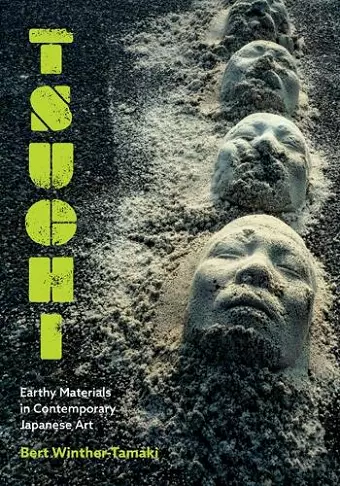Tsuchi
Earthy Materials in Contemporary Japanese Art
Format:Hardback
Publisher:University of Minnesota Press
Published:31st May '22
Should be back in stock very soon

An examination of Japanese contemporary art through the lens of ecocriticism and environmental history
Collectively referred to by the word tsuchi, earthy materials such as soil and clay are prolific in Japanese contemporary art. Highlighting works of photography, ceramics, and installation art, Bert Winther-Tamaki explores the many aesthetic manifestations of tsuchi and their connection to the country’s turbulent environmental history, investigating how Japanese artists have continually sought a passionate and redemptive engagement with earth.
In the seven decades following 1955, Japan has experienced severe environmental degradation as a result of natural disasters, industrial pollution, and nuclear irradiation. Artists have responded to these ongoing catastrophes through modes of “mudlarking” and “muckracking,” utilizing raw elements from nature to establish deeper contact with the primal resources of their world and expose its unfettered contamination. Providing a comparative assessment of more than seventy works of art, this study reveals Japanese artists’ engagement with a richly diverse repertoire of earthy materialities, elucidating their aesthetic properties, changing conditions, and cultural significance.
By focusing on the role of tsuchi as a convergence point for a wide range of creative practices, this book offers a critical reassessment of contemporary art in Japan and its intrinsic relationship to the environment. Situating art within the context of ecology and urbanization, Tsuchi shows artists striving to explore and reprocess raw forms of earth beneath the corruptions of human activity.
"Tsuchi is a compelling and original book that brings together new insights into the relationships between environmentalism, contemporary art, and the ‘aesthetics of Japanese earth.’ Bert Winther-Tamaki’s interweaving of historical context, close visual analysis, and rich use of Japanese sources make it an outstanding book that will make a lasting impact in the field of Japanese art history and beyond."—Namiko Kunimoto, author of The Stakes of Exposure: Anxious Bodies in Postwar Japanese Art
"Tsuchi is a superb key concept that allows us to dig deeper into a rich lode of world art history that is postwar Japan. In his thoughtful study, Bert Winther-Tamaki literally offers us a bottom-up view of what such radical practitioners as Shiraga Kazuo and Nakahira Takuma saw, felt, and experienced with this ubiquitous matter of our planet."—Reiko Tomii, independent scholar
"Tsuchi provides an ingenious structure for understanding the visual culture surrounding the very ground we stand on. "—H-Net Reviews
"Against the backdrop of the region’s urbanization and intensifying environmental issues, this rigorous text seeks to understand the earth itself as an artistic medium for critiquing the roots of these interconnected crises, and the fusion of ecology and art as a potential path forward."—Hyperallergic
ISBN: 9781517911904
Dimensions: 254mm x 178mm x 38mm
Weight: unknown
312 pages